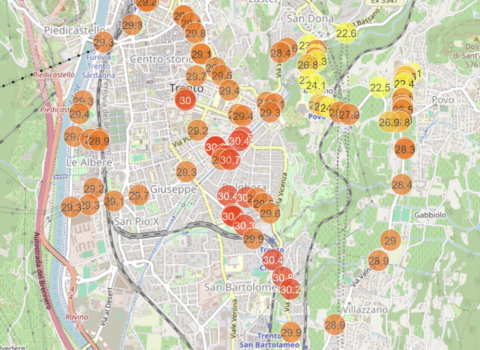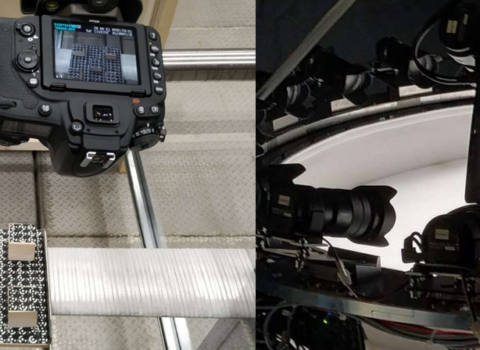
Civil defense, operator training with virtual reality viewers
Albere and Vela neighborhoods hit by flooding: emergency management simulation teamed up with Austria and Portugal
The streets of Trento invaded by water, the Adige river overflowing and invading the streets and park of the Albere district. It is not a movie, but a reality that is being built by the most advanced technology.
Operators from the Trentino Civil Defense – Risk Prevention Service and Cue, the firefighters of Trento’s permanent corps along with colleagues from Austria and Portugal – face the emergency, but they are not physically in the field. They are in the heart of a virtual environment, wearing augmented reality viewers, ready to handle the situation as a team. The dramatic scenario came to life as part of the TRACENET project: an initiative promoted by the European Commission within the framework of the EU Civil Protection Mechanism that involved as partners the National Department of Civil Protection, the National School of the Portuguese Fire Brigade, the Austrian Red Cross, Fondazione Bruno Kessler, under the coordination of the Department of Civil Protection, Forestry and Wildlife of the Autonomous Province of Trento.
The project involves 3D simulation to train professionals called upon to manage emergencies. The objective is to test strategies, coordination and reactions in real time within a virtual environment, created by FBK researchers (3DOM Unit) and based on the scenario reconstructed by the technicians of the Dams Office – in collaboration with other European partners – to make the experience as realistic as possible.
Over the course of two days, operators wore viewers to enter a virtual operations room, where they planned responses to deal with the simulated emergency in close synergy – but remotely. The exercise was set against the backdrop of a flood caused by heavy rainfall, with flood levels being reached in Trento’s Albere and Vela neighborhoods.
“International collaboration represents an added value for the Civil Defense,” explains project coordinator and director of the Artificial Intelligence Simple Mission Unit of the Autonomous Province of Trento, Silvia Marchesi. “The Trento case was an ideal opportunity that allowed us to consolidate the operational capabilities of responders in real emergencies. In the most complex scenarios, the sharing of knowledge and resources is key: for this reason, the goal of TRACENET was to create a network among Civil Protection training centers at the European level,”Marchesi added.
“The project,” Fabio Remondino, head of the 3DOM Unit, FBK’s Center for Digital Industry, pointed out ”sees us as the only technological partner supporting civil defense and emergency response agencies from three European countries. TRACENET’s goal is to develop a solution, based on virtual reality, to facilitate the preparation of rescue operators remotely.”
“TRACENET’s technological framework,” added Simone Rigon, developer at FBK-3DOM, ”allows multiple operators, remotely located around the world, to perform specific and useful actions to improve the preparedness of rescue teams for hazards and emergencies on the ground.”
The Department of Civil Protection, Forestry and Wildlife of the Autonomous Province of Trento played a leading role, assisted by the national department, bringing its experience to the exercises (the largest was last spring and had involved more than 600 rescuers) and confirming its ability to manage emergencies, thanks to the training of its operators and the use of the available means.
Follow the link to the press release on the Trento Province website




